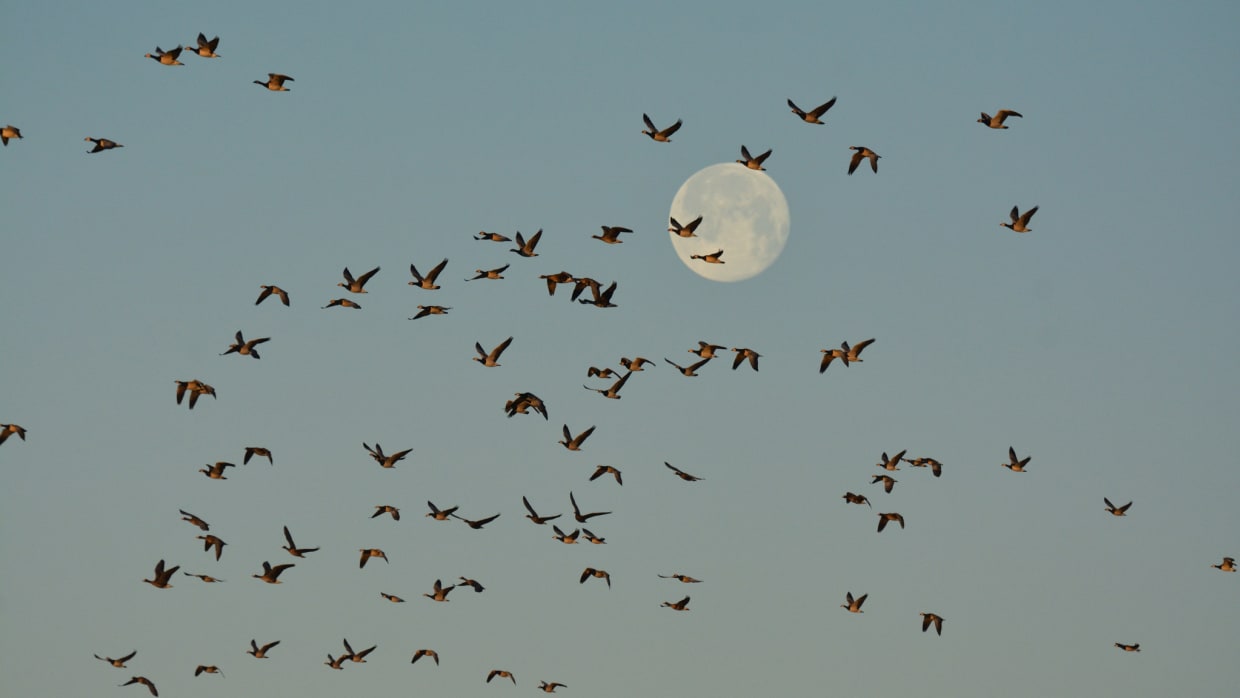
Wild birds are upset by fireworks for days
Despite the general ban on shooting fireworks in Amsterdam, New Year’s Eve is likely to be accompanied by loud bangs again this year. For wild birds, such as geese, this is anything but a celebration, UvA researchers from the IBED discovered. Geese not only fly up on New Year’s Eve, but also exhibit abnormal behavior for days afterwards.
“Every birder knows from experience that a lot of birds fly over at the end of the year,” says Bart Nolet. He is a UvA professor of movement ecology of waterfowl, and co-author of research on fireworks and geese published in late November in the journal Conservation Letters.

That birds fly up during the lighting of fireworks has also been shown in previous UvA research with observations from weather radar at De Bilt. “During fireworks, you see birds appear on the radar and disappear again three-quarters of an hour later. That suggests that the birds land again after three-quarters of an hour.”
Animals with GPS transmitters provide a more detailed picture of their location. At an international goose symposium in January 2020, several researchers believed they observed strange behavior in the data of “their” transmitter-equipped geese during the New Year's Eve fireworks display three weeks earlier. To this end, researchers from several knowledge institutions, including UvA, the Netherlands Institute of Ecology (NIOO-KNAW), and the German Max Planck Institute for Animal Behavior decided to further investigate the behavior of geese at the end of the year.
Four species of geese
The researchers used data from eight consecutive years from a total of 350 transmitter-equipped geese in Germany, Denmark, and the Netherlands, which provided two years of average data per goose. Four species of geese were studied: the white-fronted goose, the barnacle goose, the reed goose, and the pink-footed goose.
The data showed that half of the geese responded strongly at year's end, and the other half did not. To explain this, the researchers wanted to know where a lot of fireworks were set off and where there were only a few. Through Dutch National Institute for Public Health and the Environment (RIVM) measurements of the particulate matter released when fireworks are set off, the researchers hoped to find out. Nolet says: “Unfortunately, those measurements turned out not to be detailed enough to indicate exactly where many fireworks were set off because the particulate matter spreads quickly with the wind.
(Read below the image.)

Higher and farther
And so the researchers lumped all the data together. There they saw that geese do indeed fly into the air when the clock strikes midnight. “They fly up to 150 meters higher than the nights before and after, and then they fly on average 10 kilometers away from the fireworks. But some geese travel hundreds of kilometers that night, flying up the North Sea.”
What's new about the research is that it reveals that the geese also end up at new roosts. They remain there at most two or three days, while they normally spend five to six days at a roost. Nolet says: “It suggests that they end up in places that are not ideal. We also see that they spend more time foraging in the days after New Year's.”
The birds presumably eat more to compensate for the extra effort of the night flight. “There is very little time for supplemental feeding. During the shortest days of the year, the geese are already limited by reduced daylight. So the disruption from fireworks comes at an unfortunate time for the birds, especially if it coincides with a cold period with lots of snow.”
Fireworks ban
Even with fewer fireworks, the geese show abnormal behavior. The researchers saw this from the data from New Year's Eve at the end of 2020, when a total fireworks ban was in effect. That year, fireworks were still set off, but fewer than in previous years. Fireworks fatalities were about a third compared to previous years. “In that year, we saw that two of the four species we studied did fly up.”
Nolet argues for a concentration of fireworks. “Unfortunately, in our study, we were unable to measure the distance at which geese begin to be disturbed by fireworks. Previous research at a fireworks show with five transmitter-equipped geese showed that geese fly up beginning at six kilometers away. So the question of how much to concentrate the fireworks to avoid disturbing the birds less is still open.

